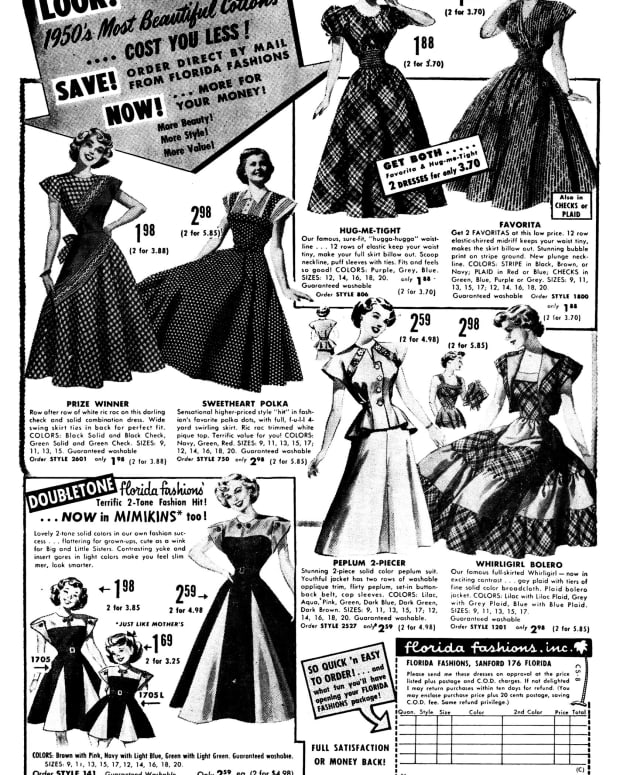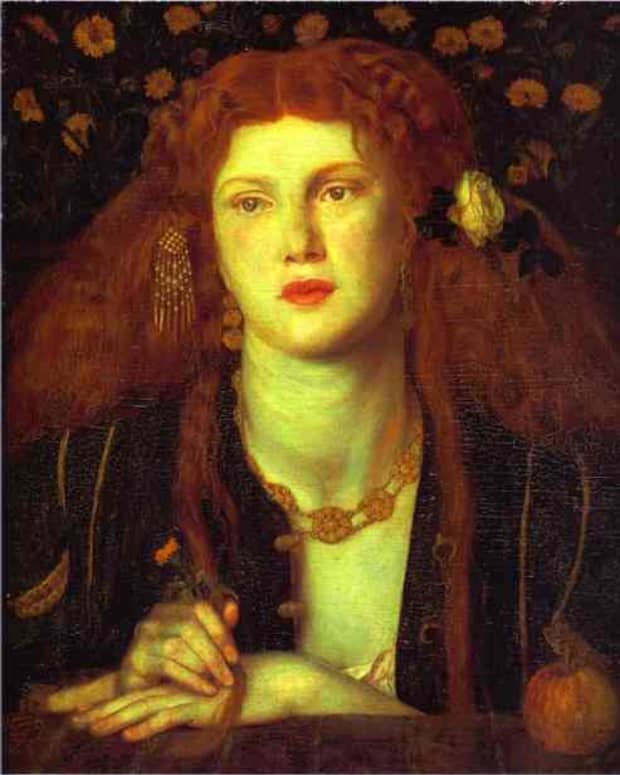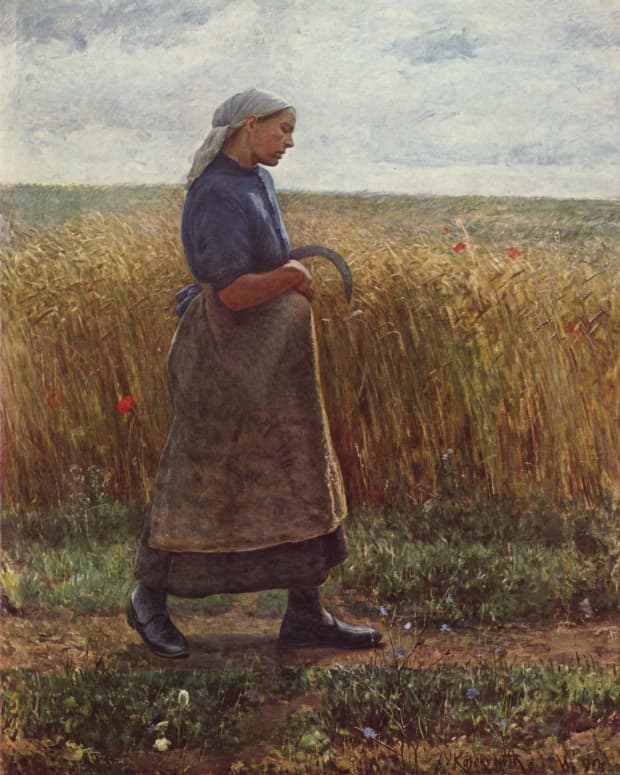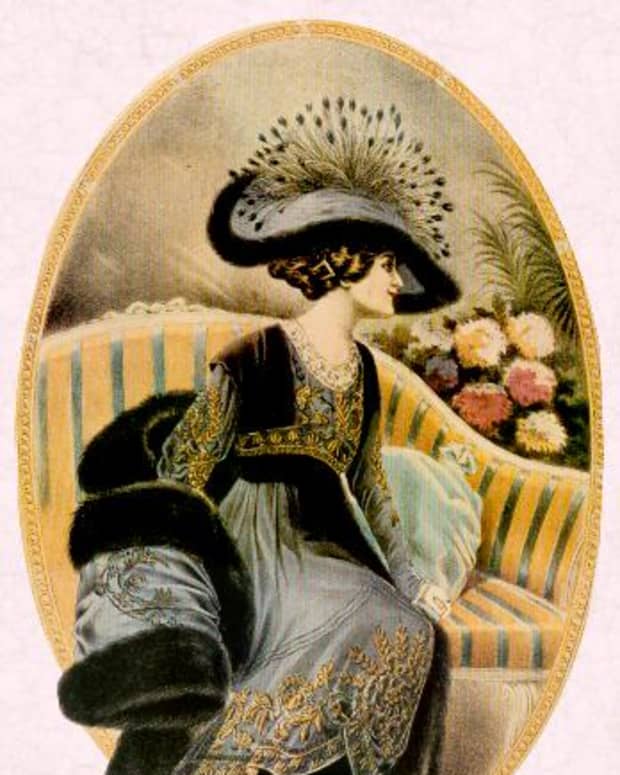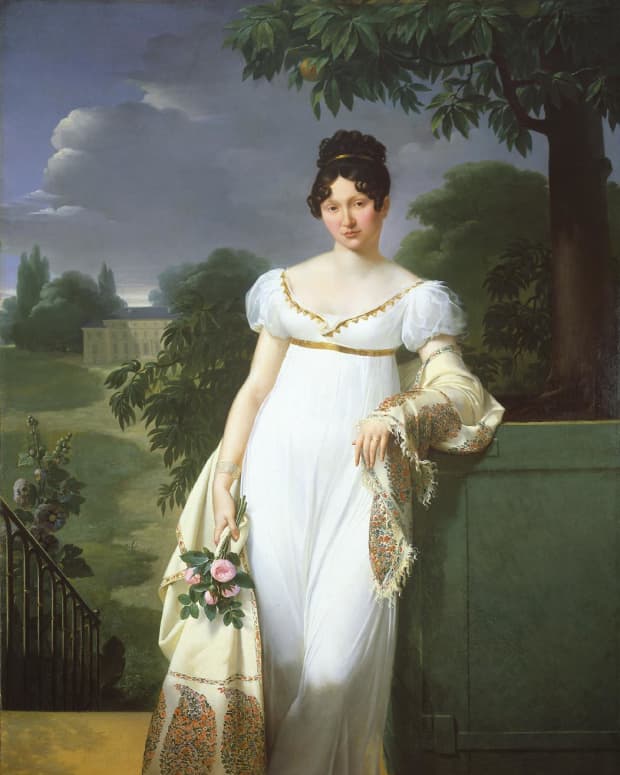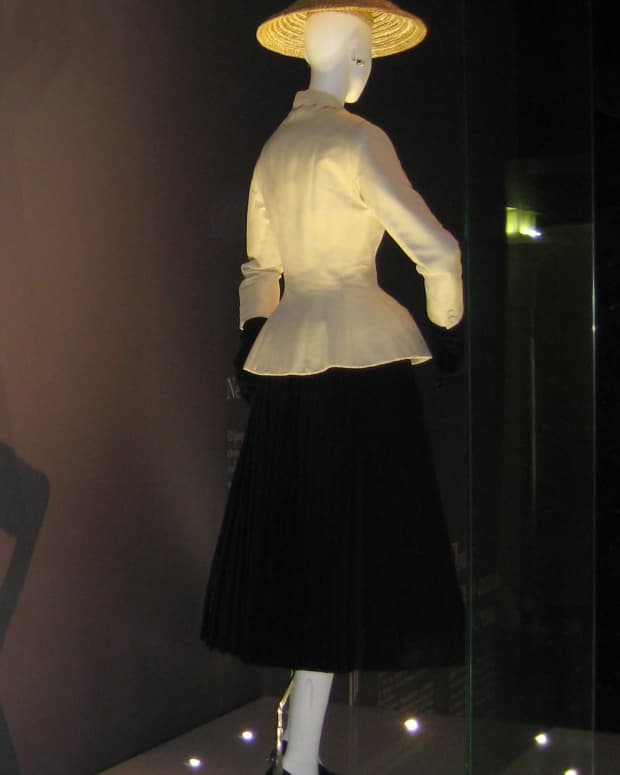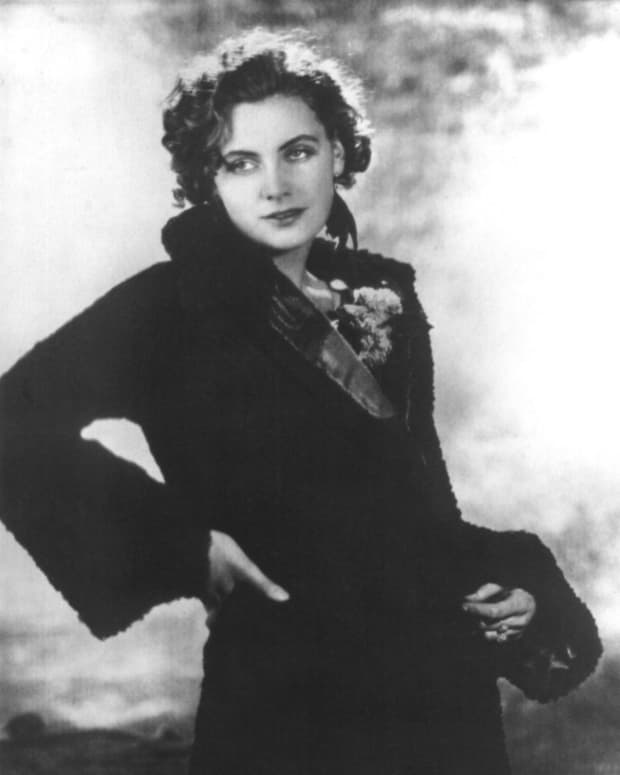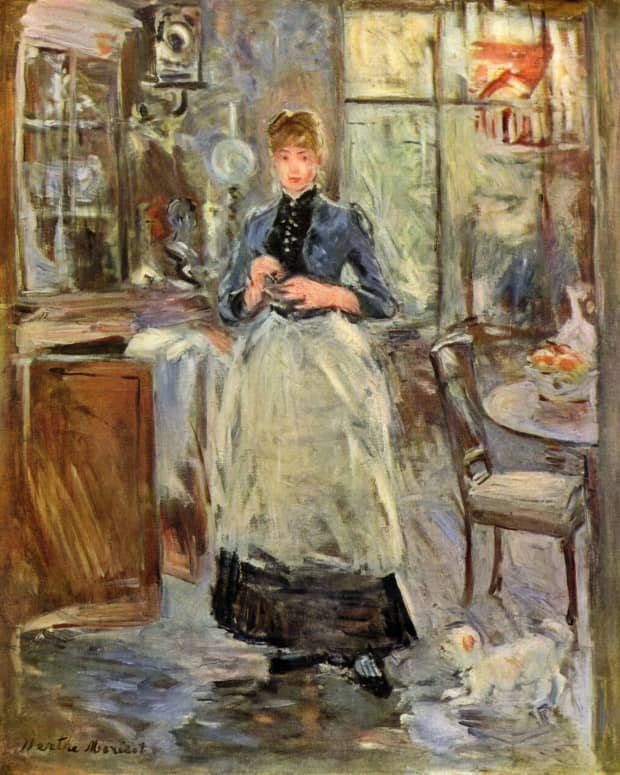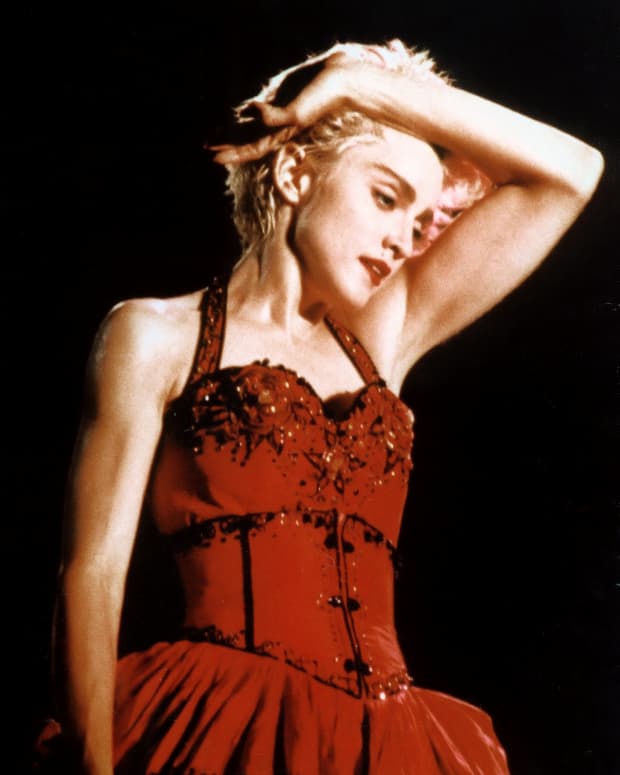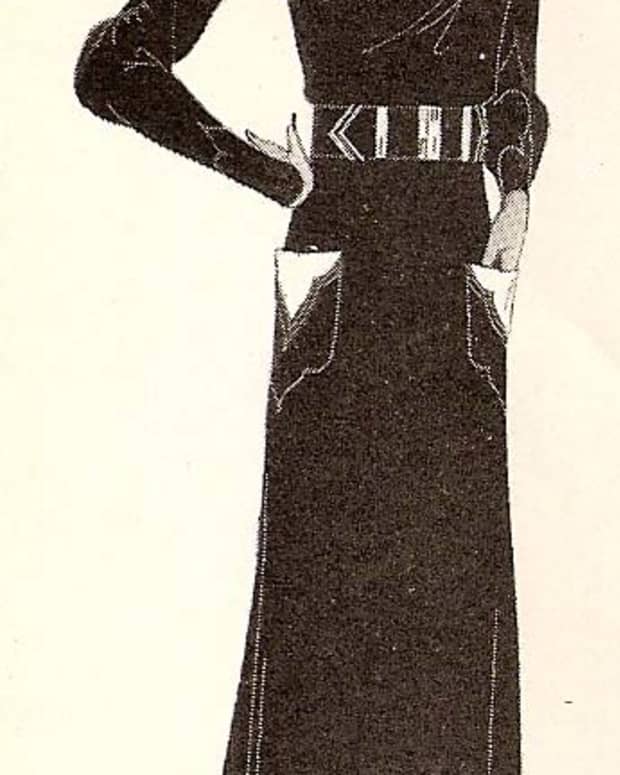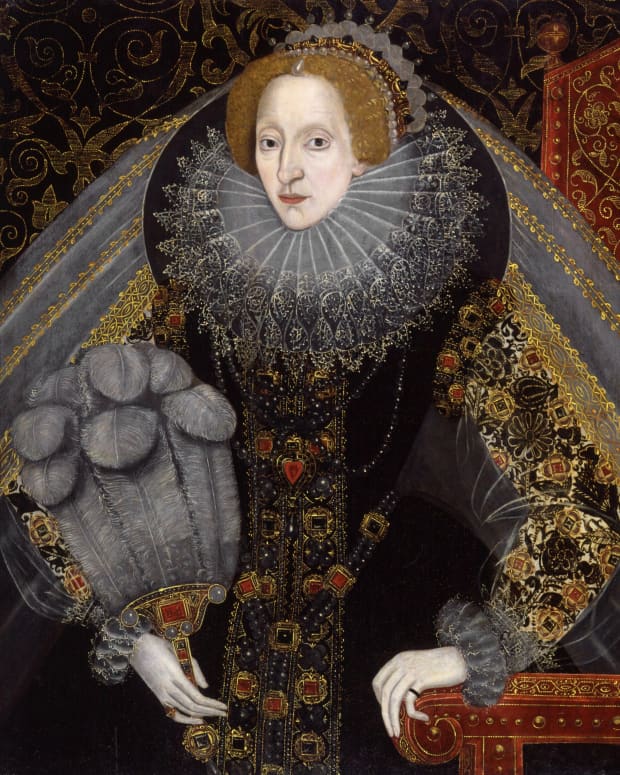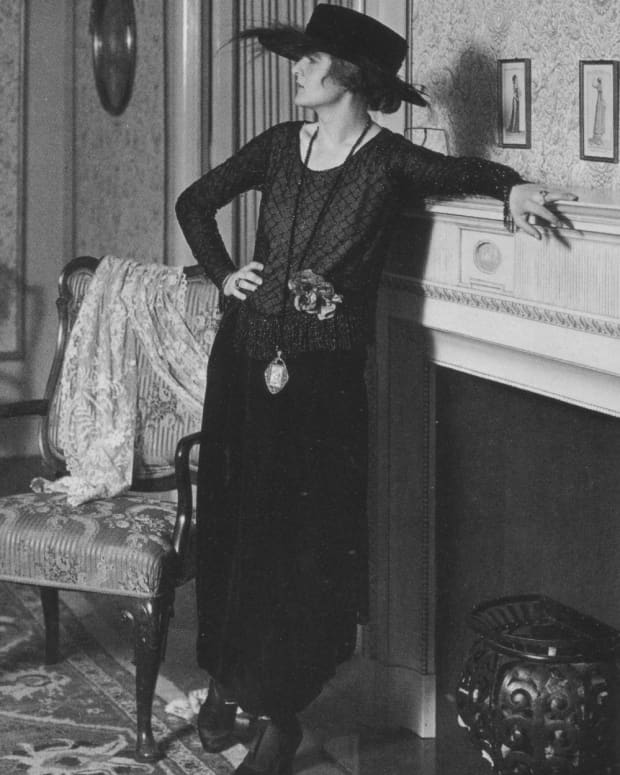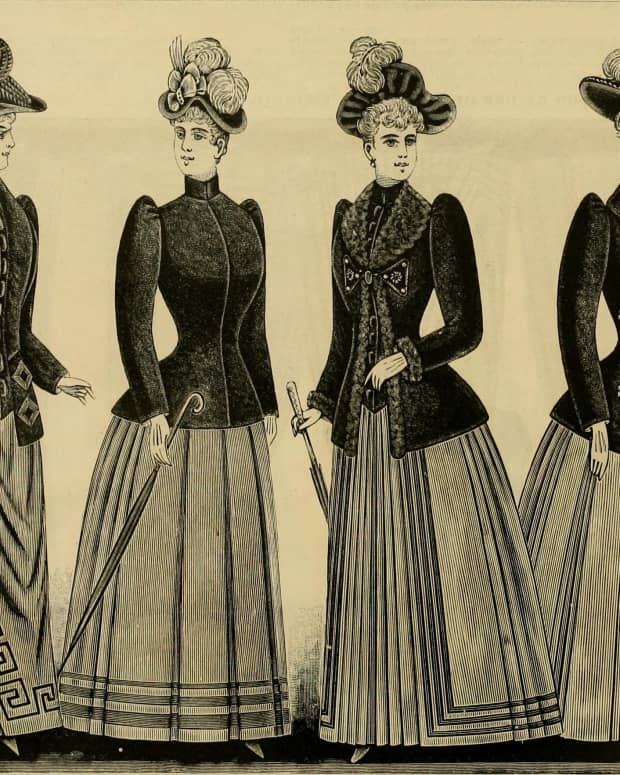Clothing History: Fashion and Style in the 1970s
Dolores's interest in fashion history dates from her teenage years when vintage apparel was widely available in thrift stores.

Tight shirts, high waisted pants, a thin build, and shag style hair typify 1970s style for men and women
ABCTV publicity photo; wikimedia commons; public domain
Fashions of the 1970s were diverse, reflecting a new interest in clothing as self-expression. No single look encompassed the decade, which was a mixed bag of hippie/Bohemian, retro, and punk. The general silhouette was long and lean with lots of hair, a look for both sexes that gave the era an androgynous appeal. This was the time for uni-sex hair salons, a time when platform shoes appeared for both men and women, and both sexes wore high waisted pants and shag haircuts.
Early 1970s fashion continued 1960s themes of Pop Art, Op Art, and psychedelia with bold prints in bright colors and geometric designs. Bohemian styles of the hippies mixed Victorian with fantastic colors as well as with ethnic elements. Art Nouveau added a sinuous romance with the flowing natural lines of Mucha posters, then moved to Edwardian collars and long printed dresses with a lace of ruffled bib fronts.
The Civil Rights Movement of the recent past encouraged other groups to grasp at their own freedoms. Women's Liberation loosened the structures of uncomfortable undergarments and women's wear in general. The Gay Liberation Movement led to gender-bending styles and a feeling of self-determination. People felt free of social dictates, no longer ruled by the elite fashion houses.
The oil crisis led to the mid-1970s recession. A poor economy and unemployment of youth squeezed their pocketbooks. An educated youth looked for clothing that expressed their individuality, and for unique garments bought on the cheap.
1970's Androgyny
Looking at photographs of people in the 1970s, you can see that men and women sported similar styles. High rise pants that extended the waistline above the natural waist were worn by both sexes. The early 70s bell bottoms gave way to less exaggerated flare legged pants, then to straight legs by the end of the decade. Button-down shirts, short and long-sleeved T-shirts were worn tight and tucked in. Topped with flowing tresses, the look for young men and women was, essentially, the same.
Women wore pants more often than ever before. Pantsuits became common business attire for women and were paired with button-down shirts with large, pointy collars, and masculine jackets. Pussycat bows added a touch of femininity to women's blouses worn for dress or business.
Males began to sport flowing scarves, lipstick, and bright colors usually reserved for women.
The sexual awakening, along with Women's Lib and Gay Lib movements, suddenly gave cross-dressing a new appeal. Tim Curry's transvestite vampire in the 1975 film, Rocky Horror Picture Show, introduced a charmingly shocking new look and took androgyny to new heights in an ironic form of glamor.
Hippies and Bohemians
Ten years after Rachel Carson's Silent Spring, people were questioning the technological and chemical trappings of progress. A Back to the Earth culture introduced a new interest in rural living and handicrafts. Adherents of the ideal wore simple garments based on European peasant costume, American pioneer clothing, and ethnic styles. Shirts and dresses were loose, soft, and easy to sew. Worn with sandals, clogs, or boots, "granny" dresses, loosely based on Victorian and Edwardian styles, became so popular that they often showed up at weddings. Also known as Prairie style, the dresses featured tiered skirts, ruffles, and yoked tops.
Dashikis and Kaftans were comfortable yet attractive and carried forward the hippie look. Curly hair broke free of past restraints and the 1960s Afro became commonplace. Men and women grow out wild manes of curls in Pre Raphaelite styles.
Layered beads and bangles, lots of large rings were popular jewelry. A natural look de-emphasized makeup.
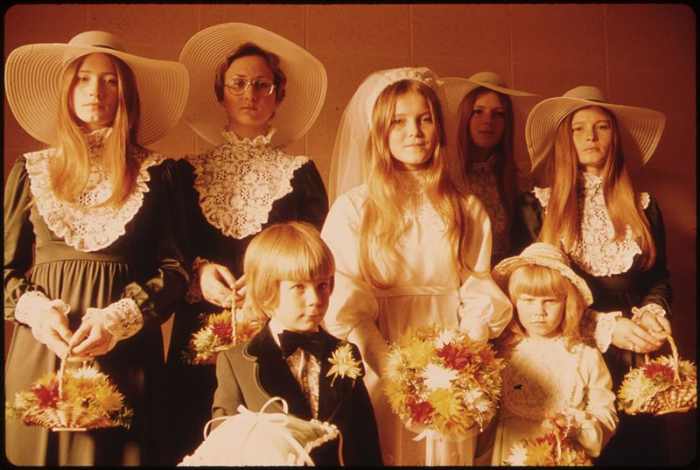
A quaint historical style featuring elements of Victorian and Edwardian fashions was popular at weddings during the 1970's.
USGov Archives; wikimedia commons; Public Domain
London's Boutiques and 70s Style
In the 1950s, independent designers began to open their own shops featuring unique styles for young people. By the 1960s, these designers helped London became a fashion hub.
Biba opened in the late 50s after an initial run as a mail-order business. Overwhelmed by consumer interest, Barbara Hulanicki offered affordable clothing, jewelry, and home goods to young ladies. By the early 1970s, the trendsetting Hulanicki needed to expand and opened a bigger Biba in a building with Art Deco interiors. She ushered in a trend toward Art Deco aimed toward her target shoppers: girls with big heads and small bodies.
Read More From Bellatory
John Bates, influenced by Pop Art and Op Art created garments with stripes and geometric shapes in stretchy jersey.
Ossie Clark's designs were picked up for stage wear by The Beatles, Mick Jagger, and Liza Minnelli.
Bill Gibb introduced romantic clothing based on historic looks from medieval to Renaissance styles. Incorporating Eastern European folk costume and hints of the Aesthetic Movement, he mixed and layered patterns in plaids and florals, creating an exciting, eclectic look that has reappeared ever since.
The poor economy of the mid-1970s shrunk the influence of the British Boutique scene. Young people were no longer able to afford even independent designer clothing. The influence of the London Boutique dwindled.
Laura Ashley, however, slipped into the mainstream and remained a commercial success. Her cotton floral print dresses with long sleeves, high necklines trimmed with lace were reminiscent of Victorian and Edwardian British country dress.
Laura Ashley Dresses
Thrift Stores as Fashion Hubs
As people looked to clothing for self-expression, they needed new places to shop for clothes. The recession of the mid-1970s put an educated youth out of work or working at odd or low paying jobs to make ends meet.
Thrift stores offered it all—unique garments for low prices. During the 70s, vintage clothing could be found for next to nothing. Dresses, jackets, coats, jewelry, and hats from the earlier in the century were mixed with jeans and other modern garments.
In those days of free TV, local stations often ran classic movies. Young people, enamored with films from the 1920s, 30s, and 40s could purchase old clothing to emulate the Golden Age of Hollywood. The retro look made it easy to look different.
Newer films like The Great Gatsby in 1974 and Cabaret in 1972 influenced fashion trends. Yves St. Laurent's 1971 collection drew heavily on women's fashions of the 1940s.
Disco Fashion
In the 1960s, young people flocked to dance clubs called discotheques. The French word evolved into Disco, a new brand of music and a subculture first popularized by African American and Latino youth.
In the 70s, urban young people, sick of hippies and wary of the arty retro scene, looked for glamor at the dance clubs. A unique fashion sprang up around the sound. Women wore halter dresses or hot pants made of satiny fabrics, decorated with sequins. Men wore tight, shiny pants and tucked in shirts opened halfway down the chest. Gold necklaces or medallions completed the look.
The Disco life was portrayed in the 1977 film Saturday Night Fever that featured popular music of the genre.
Punk
Doc Martins
Punk
The recession of the mid-1970s toned down the fantastical whimsey of earlier styles. A beleaguered working-class mentality led toward a tougher mood of antisocial reaction. Rebelling against the hippie movement and high culture, Punk embraced the trashier aspects of society based on a low-class delinquent culture. Torn pants, black clothing, choppy haircuts, and chains as jewelry epitomized a youth that felt marginalized by unemployment and a dim future.
Tight black pants featured large zippers, straps, and studs. Women who wore miniskirts paired them with torn fishnet stockings. Large work boots or exaggerated platforms, and Doc Martin boots made people look tough, yet interesting. Wild hair molded into spikes or teased out was often dyed bright unnatural colors—greens or bright shades of pink. Faces were pale, accentuated by dark eyes and dark red or black lipstick.
The New York art crowd took up this new urban style. Punk became a significant influence on fashion for many years and still can be seen on runways today.
The designer Zandra Rhodes looked to London street styles and ethnic Bohemian fashion to create couture versions with gypsy and Eastern European themes. In the late 1970s, her adaptations of Punk hit the runway in high-end garments for the very elite that the originators of the style rebelled against.
The Ugly Side of 1970s Fashion
Cheap knock-offs of early 70s high-end designs appeared in department stores and the newer discount stores in synthetic materials like polyester, cheap jerseys, and blends. The ugly side of the 70s produced geometric prints in bright orange, lurid shades of green, and muddy brown. High waisted, plaid polyester pants became an iconic garment for people who now laugh at 70s fashions.
The thankfully short-lived leisure suit gave a twist to men's casual wear. Polyester suits trimmed with contrasting stitching sported wide lapels and came in bright or pastel colors. The concept that bright colors weren't just for women saw men adorned in baby blue, orange, mauve, and chartreuse. Loud or pastel colors showed up in tuxedos at weddings, often paired with matching shirts that sported rows of ruffles.
The Me Generation
The 1970s brought forward many looks of the 1960s. An eclectic mix of styles made personal choice fashionable and changed the world of fashion forever. Men and women were no longer herded into a particular style. The Bohemian concept of the self as a work of art offered intriguing garments and mixtures of clothing as well as mixtures of pattern and color. But the self-interest of the 70s created a concept of narcissism that led the writer Tom Wolfe to call the 1970s, "the me generation."
© 2014 Dolores Monet













